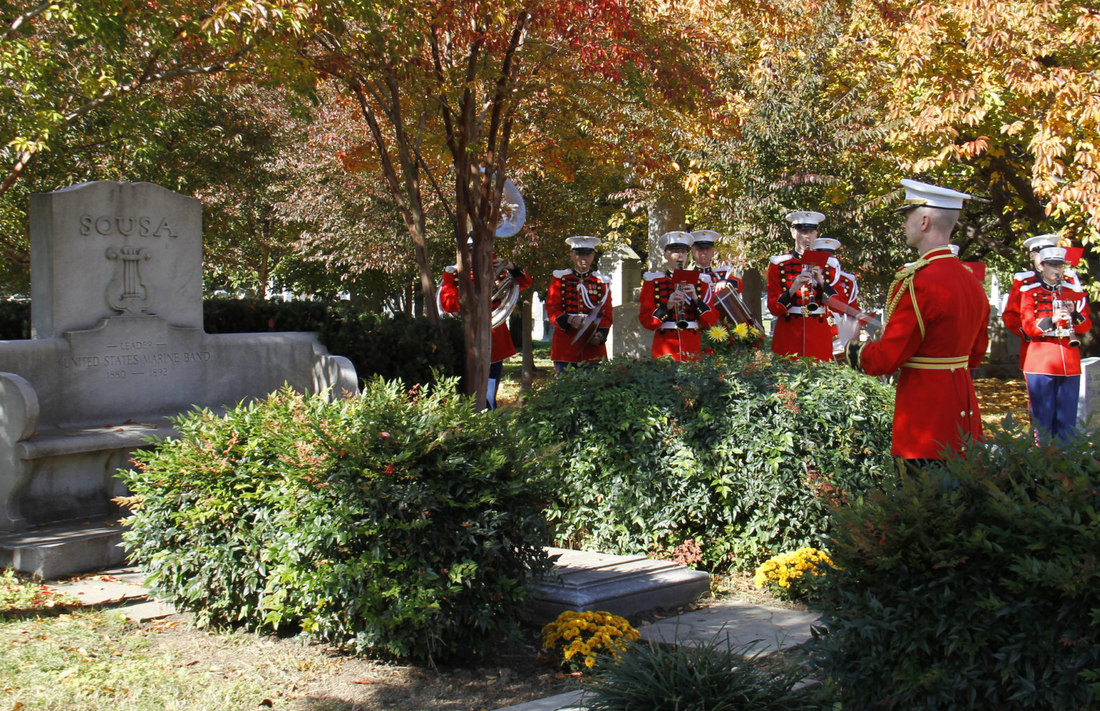|
There are so many fascinating stories to uncover! When planning vacation itineraries, graveyard visits may not be top of mind. But they are really open-air museums full of art and history and stories and nature. And sometimes you’ll find really creative nods to various lives among the headstones, too. Congressional Cemetery in Southeast DC is a historic -- and still active -- 35-acre graveyard spanning more than 300 years. And despite its name, it’s a pretty lively place. The cemetery hosts several 5Ks, concerts, and outdoor movie nights, as well as a book club and yoga classes, and plenty of dogs and their owners frequent the grounds, too. But despite its size and longtime history, Congressional Cemetery is a real hidden gem that many locals and tourists don't even know exists. The first thing to know about Congressional Cemetery is that you don’t have to be a member of Congress to be buried there, just dead. It’s the final resting place for more than 60,000 people, from Revolutionary War heroes and Native American tribal chiefs to early leaders of the Gay Rights Movement. Among those buried here are: Civil War photographer Mathew Brady, composer John Philip Sousa, former DC Mayor Marion Barry, former head of the FBI J. Edgar Hoover, and many others with fascinating stories to uncover. The property was originally private burial ground before it was turned over to Christ Church, an Episcopal church and the cemetery was known as the “Washington Parish Burial Ground.” The church started setting aside plots for members of Congress, and by the 1820s, it had become the traditional burial site for lawmakers and other high-ranking federal officials who died in Washington. It began to be referred to as “Congressional burying ground” and the “American Westminister Abbey.” Its nickname was later shortened to “Congressional Cemetery.” There are approximately 90 senators and members of the House interred at the cemetery in an area with specially designed markers known as cenotaphs. The mastermind behind the squat sandstone blocks with pointy tops was Benjamin Latrobe, one of the architects of the U.S. Capitol. But after Arlington National Cemetery was established in the bloody wake of the Civil War, Congressional Cemetery no longer became the choice spot for public officials. The cemetery’s stories illuminate a history that the museums on the Mall don’t cover—for example, that brothels were legal in the District until 1914. Mary Ann Hall, DC’s all-time finest madam, for decades had a brothel not far from the Capitol. She bought nine plots at the cemetery—one for her mother, one for her sister, and several others for men who are now nameless. Lovers? Customers? District native William H. Cross is buried here—most of him. In 1881, he was part of an expedition to the North Pole that got stranded. When rescue boats finally came, they noted that some of Mr. Cross was missing. Reportedly, his friends had him over for “lunch” *shudder* Congressional Cemetery is also believed to be unique in having a section dedicated to the LGBTQ community. Leonard Matlovich, who was discharged from the Air Force for being gay in the 1970s, purchased a plot near J. Edgar Hoover and his rumored romantic partner Clyde Tolson. Matlovich’s carefully designed headstone inspired others, especially veterans, to join him in the afterlife. The marker reads: “When I was in the military, they gave me a medal for killing two men and a discharge for loving one.” The cemetery celebrates it’s most famous resident, John Philip Sousa, every year. The native Washingtonian was a U.S. Marine Corps band conductor and composer who garnered so much fame for his rousing marches — including the “Washington Post” march, “Semper Fidelis” (the Marine Corps’ official march), and “The Stars and Stripes Forever” (the country’s national march) — that he earned the fitting title of “March King.” The cemetery hosts an annual celebration and wreath-laying in Sousa’s honor on Nov. 6, his birthday, and the Marine Corps band holds a graveside concert. And this is really cool--Congressional Cemetery is now the first final resting place for pets in the city. It’s a particularly fitting location since it’s long played host to the “K9 Corps,” that allows more than 700 pups to romp freely off leash on the property. Plots are on the eastern edge of the cemetery, right in view of the spring, where dogs who visit the cemetery as part of the K9 Corps often splash in the water (the spring is nicknamed the “doggy day spa”). To make it easier to find such landmarks, the cemetery has a mobile app to search records and tour the grounds, along with a series of walking tour guides that you can download and take with you. One lesson of the cemetery: The history of this city is not just of leading men but of small actors as well, even unmarked and unidentifiable ones. And all end up in the same place. Curious? There's more!
0 Comments
Leave a Reply. |
AboutLook up, down, and all around. Adventures can be found everywhere -- if you're curious enough to look. k for it Categories
All
|










 RSS Feed
RSS Feed